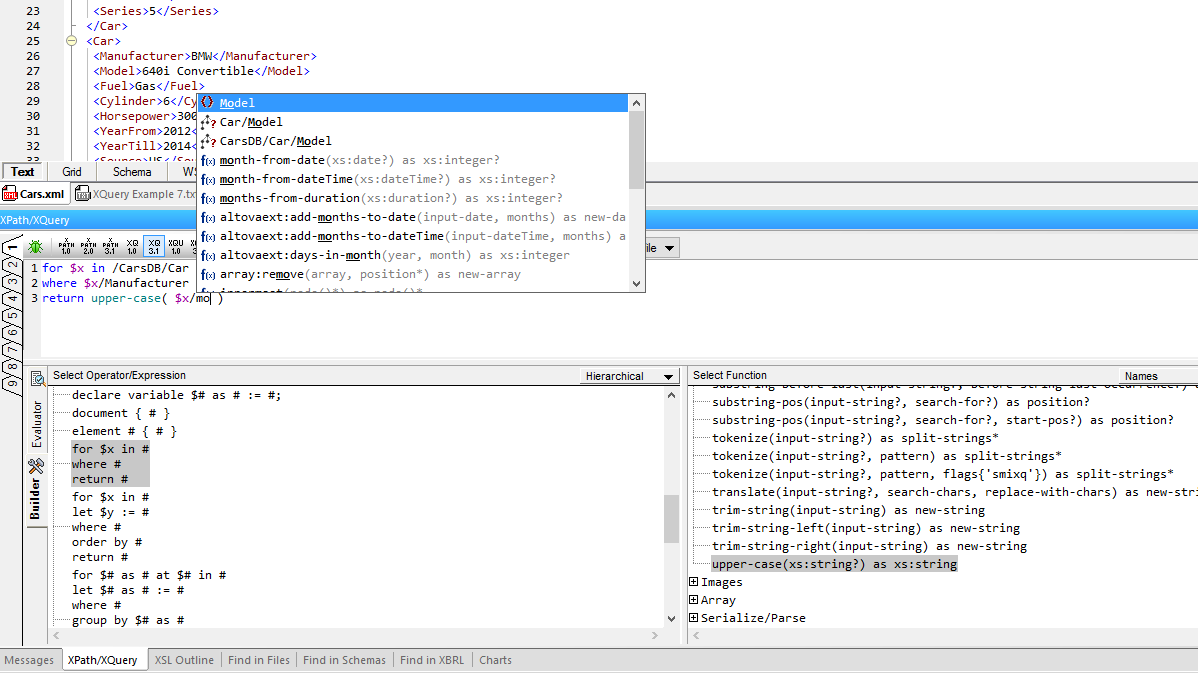XMLSpy provides native support for XQuery 1.0 and XQuery 3.1 development and execution with its built-in, standards-conformant XQuery engine powered by RaptorXML. RaptorXML delivers hyper-fast XQuery processing to speed development and test functionality prior to deployment to RaptorXML Server.
The XQuery editor has built-in knowledge of XQuery syntax and provides you with context-sensitive entry helpers at all times, including a list of variables that is updated dynamically as you edit the document. Using the XQuery editor in advanced text view provides intelligent editing features such as syntax coloring, automatic code completion, and many other time-saving utilities to help you create and edit XQuery documents quickly and easily.
Support for schema-awareness in the XQuery editor allows you to harness the full power of XQuery through mechanisms for error isolation, simplified debugging, and enhanced code performance.

